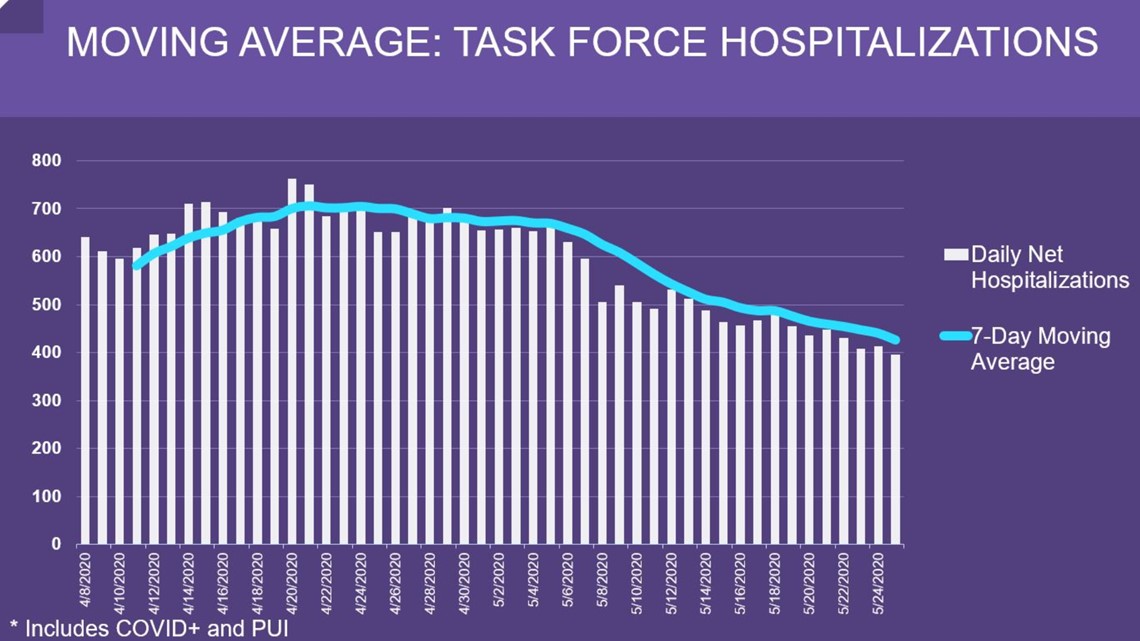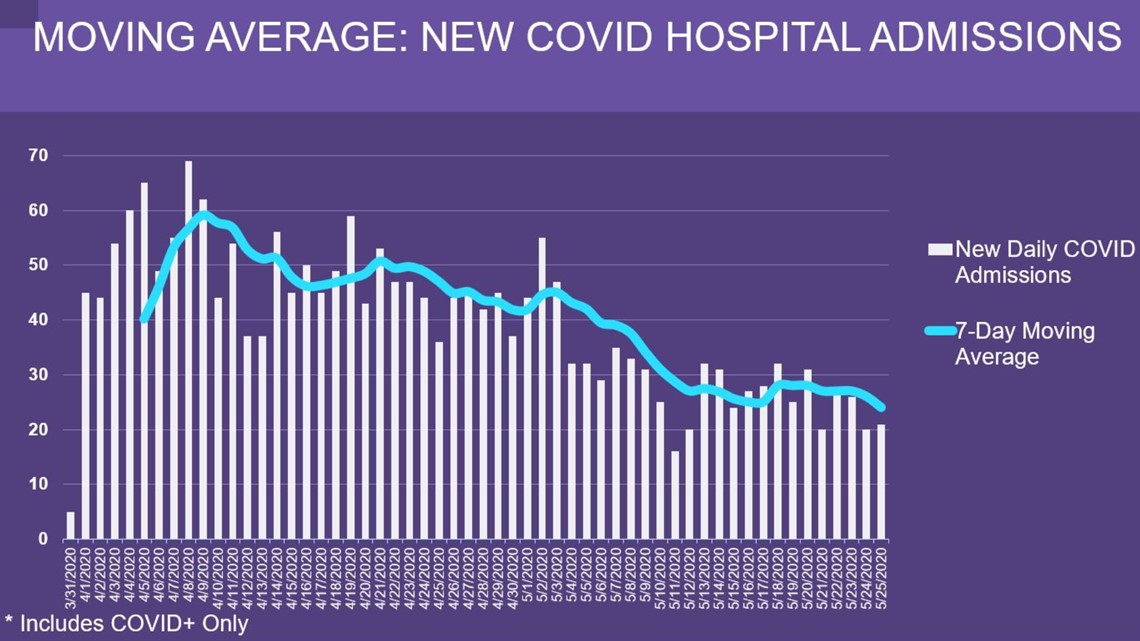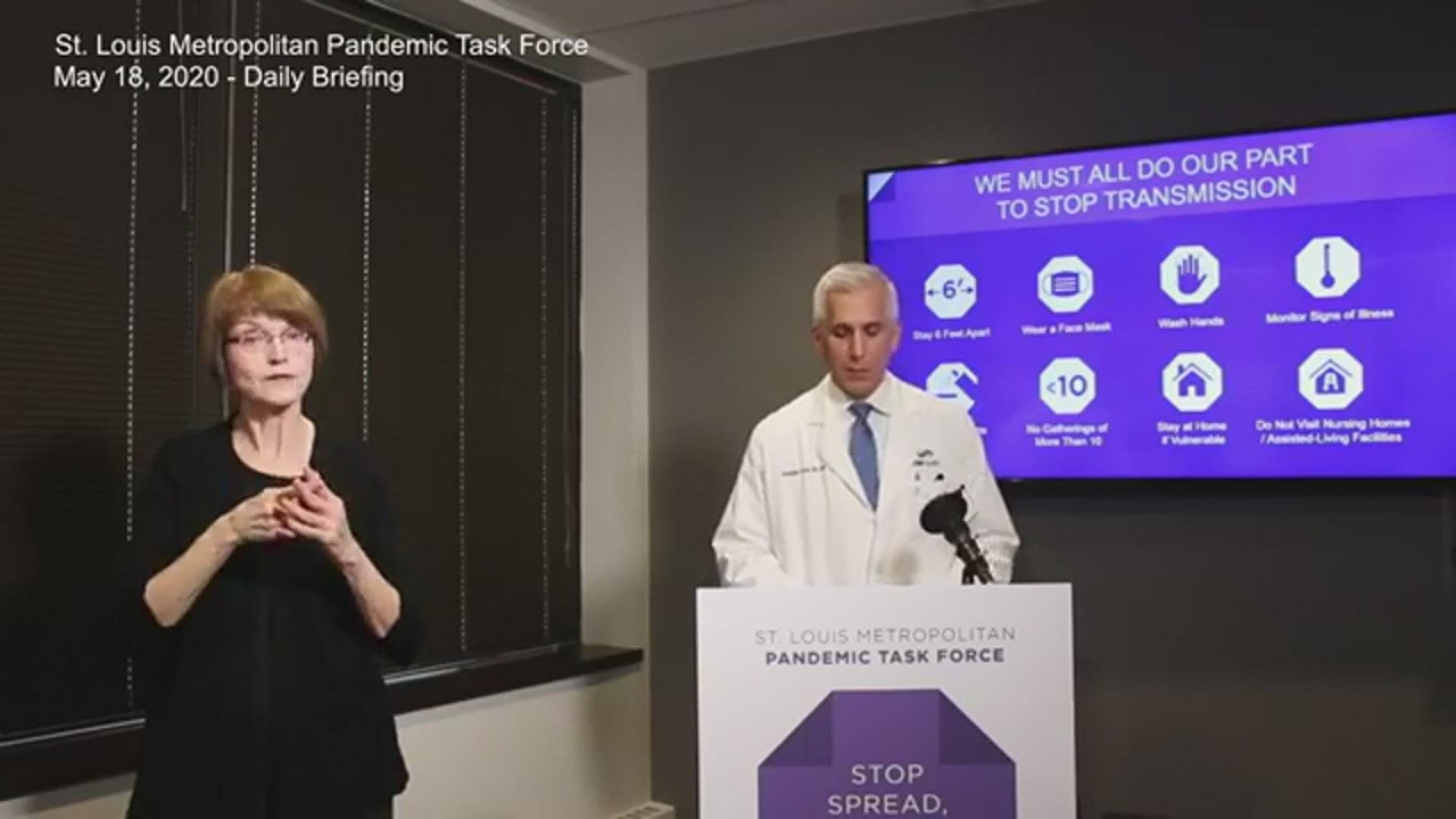ST. LOUIS — For the first time since at least April 5, the number of coronavirus patients in St. Louis area hospitals dropped below the 400 mark.
The St. Louis Metropolitan Pandemic Task Force has been keeping track of various COVID-19 data trends for the area’s four largest hospital systems: BJC HealthCare, Mercy, SSM Health and St. Luke’s Hospital.
When the task force gave its first daily update on April 5, there were 468 COVID-19 patients being treated in task force hospitals. The number grew over the next two weeks, hitting a peak of 757 patients on April 20.
On Monday, the task force reported its fewest number of coronavirus patients to date: 395 people in hospitals being treated because of the virus.


Two other key data trends — the seven-day average of hospitalizations and the seven-day average of new hospital admissions — also decreased from Sunday into Monday.


The full breakdown of data trends from the task force is below.
- New hospital admissions: 21, up from 20
- Seven-day moving average of new hospital admissions: 24, down from 26
- Hospitalizations: 395, down from 413
- Seven-day moving average of hospitalizations: 426, down from 440
- Patients in the ICU: 97, down from 110
- Patients on ventilators: 65, down from 71
Over the last 24 hours, 17 COVID-19 patients were released from task force hospitals, bringing the total to 2,105 patients sent home to recover since the first case was confirmed in the St. Louis area.
8 steps to stay healthy as cities reopen
To help keep COVID-19 in check in the St. Louis area, Dr. Alex Garza, incident commander of the task force, offered these eight steps to keep yourself, your loved ones and the entire community safe.
- Stay 6 feet apart from others – the exception being those you live with
- Wear a face mask in public
- Wash your hands frequently with soap and water for at least 20 seconds
- Clean surfaces regularly, including phones, counters, light switches – anything that’s touched frequently
- Monitor yourself for signs of illness, contact your doctor if you’re experiencing COVID-19 symptoms
- Don’t gather with more than 10 people
- Stay at home if you’re vulnerable or at high risk of infection
- Don’t visit nursing homes or assisted-living facilities
“These are the steps we all need to make to keep the transmission rate low and to prevent the new surge in cases,” Dr. Garza said.
Latest coronavirus headlines:
- What’s safer: Outdoor or indoor gatherings? Doctor says it’s all about who you’re with
- Missouri health director's dire warning to partiers: 'COVID-19 is still here'
- WHO pauses trial of hydroxychloroquine as coronavirus treatment
- NHL unveils plan for reopening team practice facilities
- Illinois releases guidelines for businesses to reopen during Phase 3


